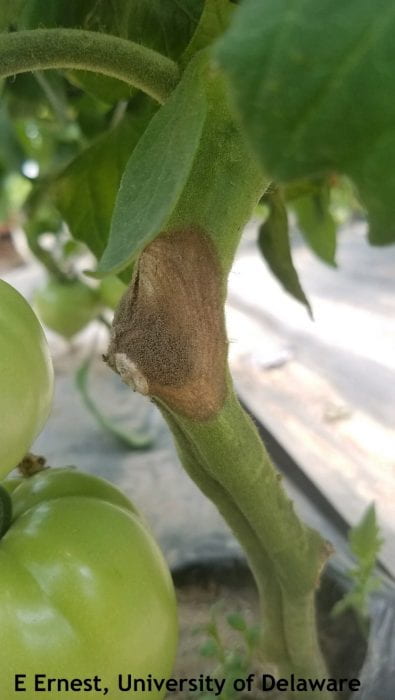Emmalea Ernest, Scientist – Vegetable & Fruit Crops; emmalea@udel.edu
Botrytis gray mold (Botrytis cinerea) impacts many vegetable crops. This week I observed Botrytis causing leaf and stem infections in a planting of high tunnel tomatoes with full size fruits that were just beginning to ripen. Leaf symptoms appeared first but now petiole scars where leaves were removed have become infected and could cause stem girdling (Fig. 1).

Figure 1. Botrytis gray mold on a tomato stem.
High humidity and moderate temperatures (65-73°F) are favorable for botrytis growth. To manage the disease in high tunnels provide good ventilation, use drip irrigation and prune plants in early afternoon to promote wound drying. Practice good sanitation measures by removing infected plants. If disease pressure is high and/or weather conditions favorable, consider fungicide application. Consult the Mid-Atlantic Commercial Vegetable Recommendations for fungicide recommendations.
This factsheet from NC State provides additional useful information on Botrytis in tomato: https://content.ces.ncsu.edu/botrytis-gray-mold-of-tomato
